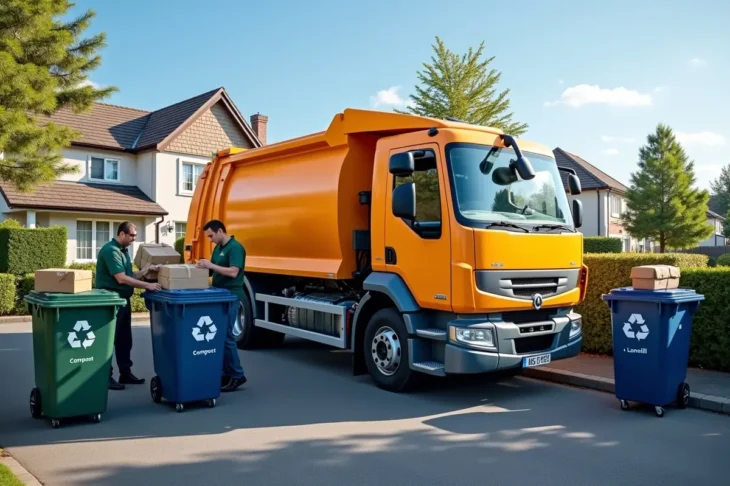
Switchboards, Sirens, and Secure Doors: The Hidden Work Behind a Station
Police buildings look normal from the street. There are doors, windows, and a front desk. Inside, the systems are different from a regular office. Power has to be steady. Doors must stay secure. Alarms and radios cannot drop out.
If anything fails at the wrong time, people could be at risk. That is why the wiring, equipment, and planning inside a station are built with care most people never see.
Contents
- 1 Why police buildings need different power
- 2 Switchboards: the nerve center
- 3 Sirens, radios, and the power behind them
- 4 Secure doors that never sleep
- 5 Cameras and alarms that do not blink
- 6 Backups on standby: UPS and generators
- 7 Cabling you never notice—but always rely on
- 8 Safety and rules without the jargon
- 9 A simple midnight test: power loss at 3 a.m.
- 10 Building for the long run
- 11 What this hidden work gives back
- 12 Key points to remember
Why police buildings need different power
A station never sleeps. Phones ring at midnight. Cells must stay locked. Cameras record all day. Computers in the control room pull in radio calls and video feeds. This means every important device needs clean, steady power with a plan for what happens when the lights go out. It is not enough to plug things in and hope for the best.
Engineers split the building into groups of loads. Some are critical, like control rooms, access doors, radios, and server racks. Others are important but not critical, like general office lights. By splitting loads, teams can protect the most important circuits first and give them their own backup path.
Switchboards: the nerve center
The main switchboard is the point where power comes into the building. From there, sub-boards send power to different wings and rooms. Inside these boards are breakers, meters, surge protection, and monitoring gear. The layout is neat and labeled so faults can be found fast. There is space for growth because stations add gear over time. Doors on the boards can lock to stop tampering. Warning labels show what to shut off and in what order.
Work on these boards follows strict safety steps. Lock-out and tag-out keep hands safe while circuits are off. Fault levels and arc flash risk are known before work starts. Breakers are chosen to trip at the right speed, so a small fault in a hallway does not shut the whole building.
Many agencies prefer teams who understand secure sites. It is common to bring in law enforcement electricians when setting up control rooms, access doors, and evidence areas, because the work blends power, security, and strict record keeping.
Sirens, radios, and the power behind them
Emergency radios and siren controls sit on racks with network gear. Some devices use low-voltage power. Others run on mains. The key is stable supply with no noise that could make signals drop. To achieve this, crews use clean power paths, proper earthing, and surge protection. Sensitive gear sits on uninterruptible power supplies (UPS). If the grid fails, the UPS keeps radios and dispatch screens alive until the generator starts.
The network that carries those signals needs care as well. Switches may use Power over Ethernet for cameras and door readers. Cables are dressed in tidy bundles and labeled room to room. Patch panels make changes easy without pulling new cable every time a camera moves.
Secure doors that never sleep
Access control is a quiet hero inside a station. Card readers, keypads, and intercoms decide who gets through. Door locks must match the safety plan. Some doors need to unlock on fire alarm to allow exit. Others must hold secure even when power is cut. For that, locks and controllers are chosen as “fail-safe” or “fail-secure,” depending on the door’s role. Backup batteries give short-term power to keep readers and strikes working during changeover from grid to generator.
The wiring to each door runs in protected paths. Conduit is fixed tight to walls and ceilings so wires cannot be pulled. Junction boxes are closed with tamper screws. Monitoring contacts on doors can show if a door is forced or left open. All of this reports back to a control panel and then to the monitoring desk.
Cameras and alarms that do not blink
CCTV is more than a few domes on the ceiling. Cameras watch entries, hallways, interview rooms, and car parks. They connect to network video recorders (NVRs) with large storage. Power for cameras and NVRs runs through surge protection and often sits on a UPS. That way, recording does not stop during a short outage. Time settings are kept in sync across all devices so video lines up with logs and radio reports.
Alarms cover many things: motion, doors, glass break, duress buttons, and plant faults. Sensors talk to control panels, which alert the desk or a response team. These systems also get backup power and regular testing. A silent fault can be worse than a loud alarm because it hides a gap in safety.
Backups on standby: UPS and generators
Every station needs two layers of backup. The first layer is the UPS. It gives instant power from batteries when the grid fails. The size of a UPS is planned by adding up the power needs of the devices it protects and choosing a runtime that covers the gap before the generator comes online. The second layer is the generator. It starts within seconds, often with an automatic transfer switch that flips the building to generator power without manual work.
Fuel storage, regular test runs, and load banks keep the generator ready. A monthly or weekly test under real load proves the system will hold steady. Logs from these tests matter as much as the test itself, because they show trends and help fix small issues early.
Cabling you never notice—but always rely on
Most of the skill in a station hides in ceilings, risers, and trays. Power and data share paths, but they cannot sit too close or noise will move across. Crews keep separation between power and data. They cross at right angles when they must. Shielded cable is used for sensitive runs. Cables are supported on trays and tied off so weight does not pull on plugs.
Color codes and labels seem boring until a fault hits. A clear label on both ends of a cable can save an hour during a repair. In critical rooms, spare fibers and spare copper pairs may be pulled during the first build. That small step makes future upgrades quick and avoids new holes or extra risk.
Safety and rules without the jargon
Stations follow strict electrical rules. These rules cover earthing and bonding so metal parts cannot shock someone. They cover residual-current protection (RCDs) for outlets where people plug in portable gear. They set standards for how hot rooms may get and how much air the racks need. Fire doors and cable seals stop smoke moving between zones. Lightning and surge devices protect gear from big spikes.
Testing is part of the job, not a last step. Insulation tests, earth tests, RCD trip tests, and thermal scans on live boards find weak spots. Records for every test are stored and checked. When an upgrade happens, the plans and labels get updated so the next crew knows what changed.
A simple midnight test: power loss at 3 a.m.
Picture a storm at 3 a.m. Street power fails. Inside the station, the UPS takes over for the control room, radios, access doors, and cameras. The screens do not flicker. The automatic transfer switch senses the loss and tells the generator to start. The generator reaches speed and takes the load. The UPS stops draining and goes back to charging.
A door reader near the cells keeps working, so the door stays under control. Cameras keep recording, so the car park and entries are still covered. The front hall lights dip for a moment, then return. The freezer in evidence storage keeps its set temperature. A log entry notes the time of changeover and restoration. When the grid returns, the switch moves power back in a controlled way. No one has to guess which breaker to touch, because the system is designed to handle it.
Building for the long run
A station grows over time. New radios roll out. More cameras get added. A small annex becomes a full wing. Good design plans for change. Spare ways in boards, extra rack space, and clear cable routes let teams add gear without starting from zero. Regular reviews check that backup sizes still match the new load. If a server room doubles its gear, the UPS and generator plan must match the new reality.
Training matters as well. Staff who use the building each day should know the basics: how to report a hot smell or a flicker, how to spot a tripped breaker light, and who to call. Small signs posted near panels can show the right steps for a safe reset or the number to reach the on-call team.
All this planning and quiet hardware creates something simple: trust. Doors open for the right people and stay shut for others. Alarms sound when they should. Radios and screens keep talking. When storms hit, work goes on. When gear grows, the plan stretches to fit. The building does not brag, but it performs when it counts.
Key points to remember
Police buildings run on steady, protected power. Switchboards split loads so critical rooms get the best support. Sirens, radios, cameras, and access doors sit on clean power with backup from UPS units and a generator. Cabling is neat, labeled, and kept separate so signals stay clear. Rules on safety are not red tape; they keep people safe and the station online. Good records, regular tests, and smart upgrades keep the place ready for both calm days and busy nights.
Questions or ideas about what to cover next are welcome. If there is interest in a deeper look at any part—doors, radios, cameras, or backup power—future sections can walk through those steps in simple, clear terms.


